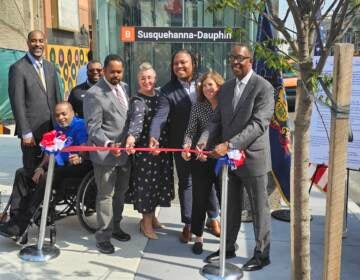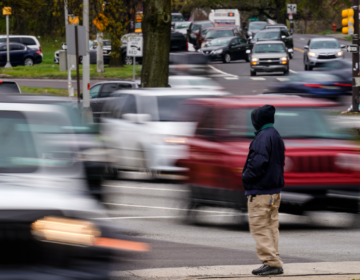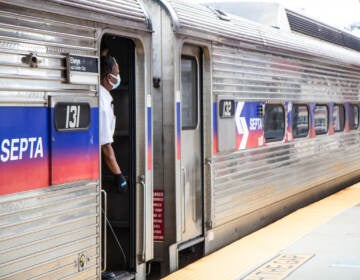Residents divided over King of Prussia rail extension proposal
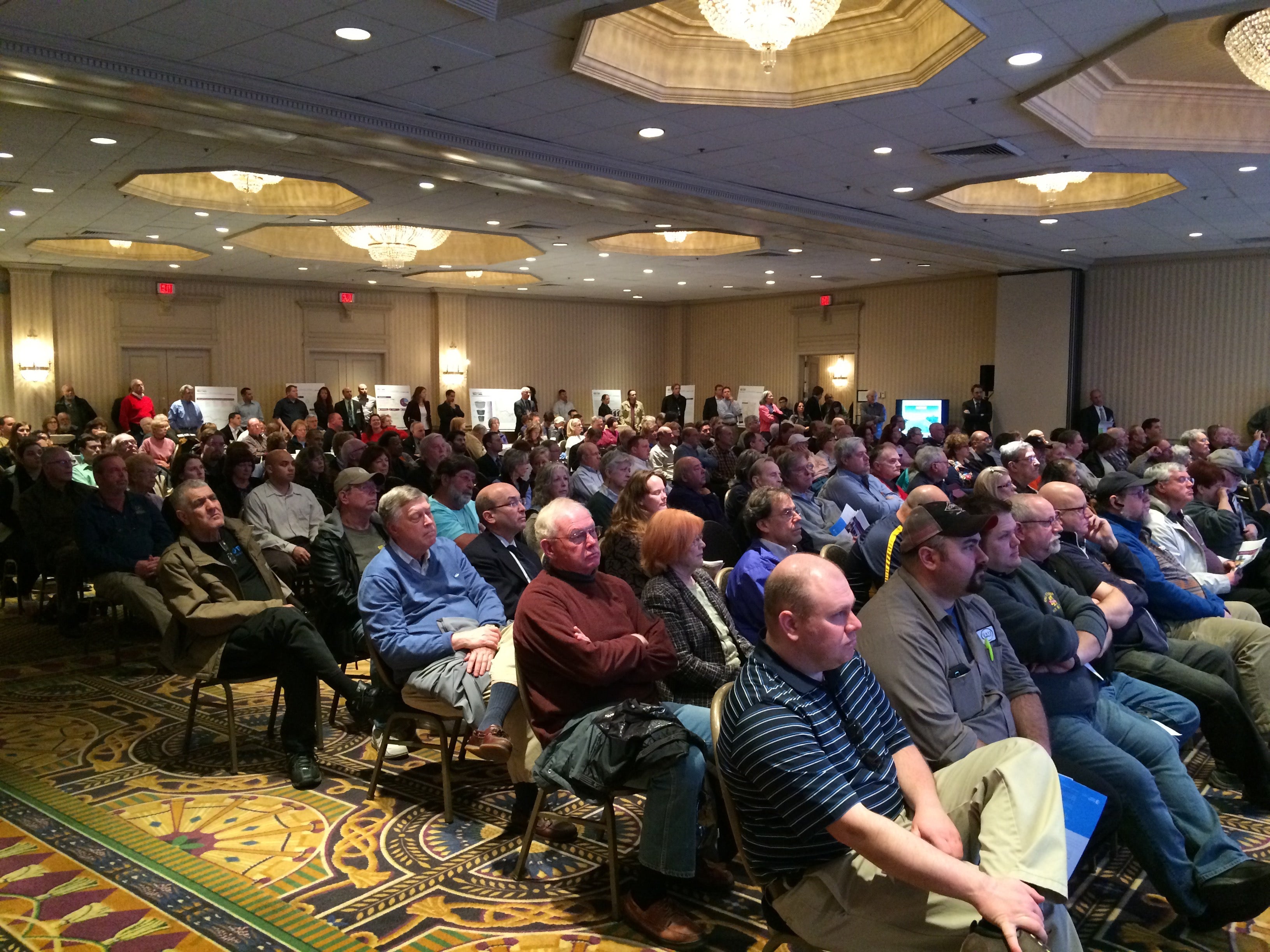
Public meetings for transit projects come in one of two flavors: soporific and angry.
No one yawned Monday night, when SEPTA publically unveiled preliminary plans to pursue an extension of the Norristown High Speed Line (NHSL) to King of Prussia.
The line would follow a PECO right of way to the Pennsylvania Turnpike, which it would follow to the King of Prussia mall before crossing the Turnpike and following 1st Avenue into the King of Prussia business park.
“This is by far the most challenging part of the extension,” began Liz Smith, SEPTA’s manager of long term planning, as her presentation’s next slide appeared on a pair of projection screens, showing an image of an elevated rail line running along the Turnpike and within yards of a few homes. “There are about 25 homes that are directly adjacent. We, at this time, say it can fit in the [Turnpike’s] right of way, but—”
From the back of the room, a chorus erupted with shouts of “No!” and “We’ll see you in court!” The extension’s opponents may not have made up the majority of the 200 attendees, but it was certainly a sizeable contingent. And, by far, the loudest.
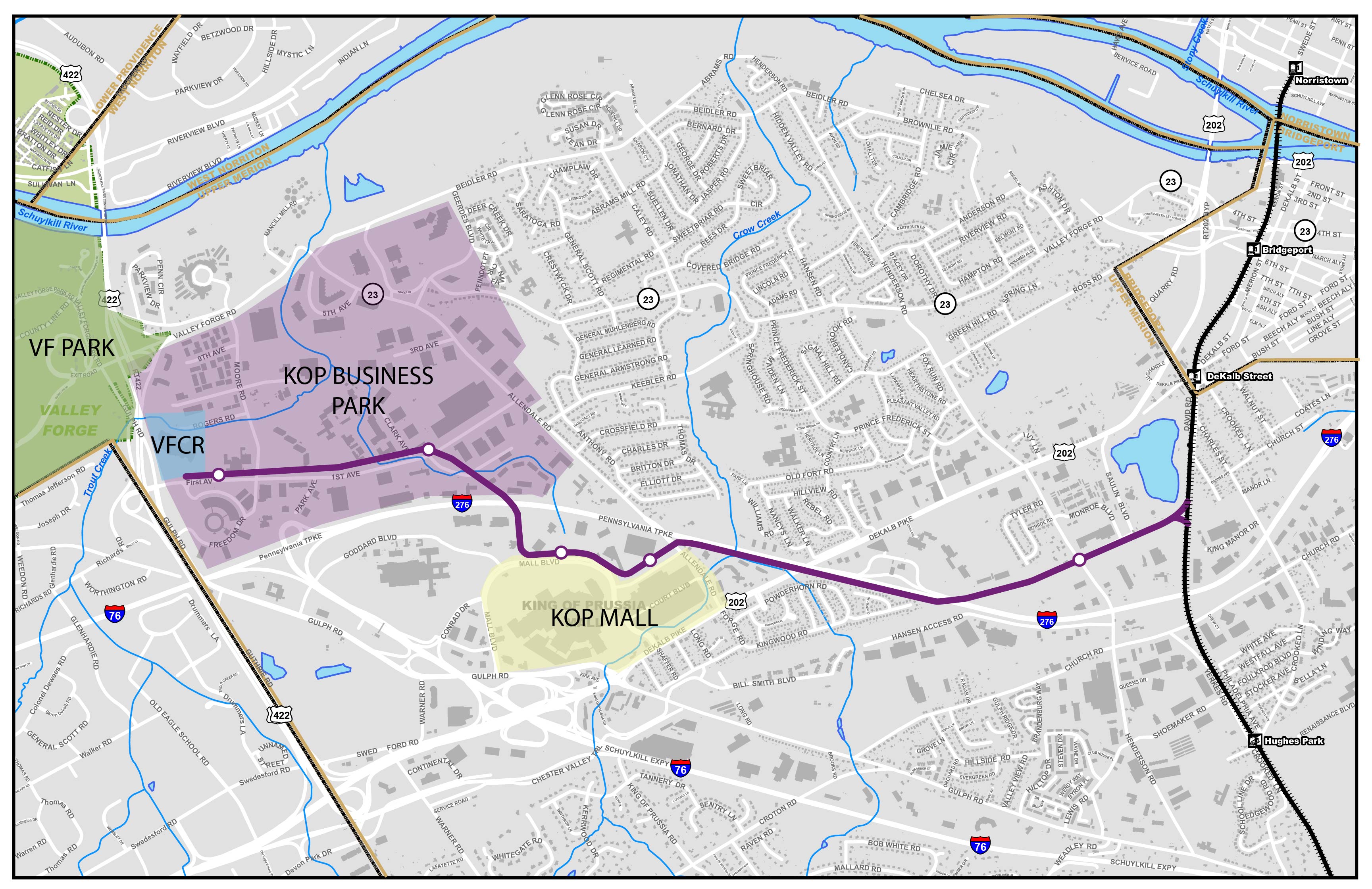
Despite the anger, this route alternative presents the path of least resistance for the project’s backers: The other four proposals all would have affected more Upper Merion residents than this one. But that was cold comfort to the residents gathered Tuesday night, who worried how the elevated line would impact their homes.
“The homeowners, we’re going to probably lose our homes,” said Kathleen Holtzinger, who said her home sits within 50 feet of the proposed route. “The value of my property will be zippo.”
Holtzinger told PlanPhilly that her anger wasn’t reserved for just SEPTA. “I feel abandoned by our Upper Merion and Montgomery County elected officials,” she said as her neighbors shook their heads in agreement.
SEPTA took the brunt of the crowd’s invective, but they aren’t alone in planning the extension. Upper Merion Township, Montgomery County Planning Commission, the King of Prussia Business Improvement District, Delaware Valley Regional Planning Commission, and the Greater Valley Forge Transportation Management Association all worked hand-in-hand with SEPTA during the planning process. Additionally, the Economy League of Greater Philadelphia released a study earlier this year touting the extension’s projected benefits on the region.
Not everyone who spoke at the meeting opposed the rail extension. One woman said she lives near a NHSL stop and described concerns over the line’s noise as “overblown.” Another said she would use the line instead of the buses.
Only six SEPTA bus lines operate around King of Prussia today. Those lines – Routes 92, 99, 123, 124, 125 and 139 – operate infrequently and can get bogged down by the intense traffic on the area arterials – a trip from 13th and Market on the 125 bus can take more than an hour and 45 minutes. All of those bus routes have “on-time” percentages – meaning within 6 minutes of expected arrival – in the low 60s. Once out of the city, many of the bus stops servicing these routes lack sidewalks, limiting their accessibility. The NHSL, meanwhile, runs a train every 10 minutes or so during peak service.
Tony DeSantis, President of the Delaware Valley Association of Rail Passengers and Collingswood, New Jersey resident, also spoke in favor of the extension, arguing that it was needed to relieve congestion and keep the region competitive. Those points fell on some deaf ears, as opponents shouted, “Go back to Jersey” and “How much did SEPTA pay you?”
Based off of public feedback before Tuesday’s meeting, this route alternative actually emerged as the runaway favorite, which led SEPTA to pick it as it’s recommended route sooner than originally planned. Sixty-seven percent of 987 survey respondents supported this route, with 53 percent saying they would use it. Over half of Upper Merion residents responding to the survey said they supported it as well. This alternative was the highest rated by all respondents, all Upper Merion residents and all Upper Merion residents that supported the extension.
By recommending a specific route sooner, SEPTA speeds up the overall planning process with Federal Transit Administration officials.
This route had the highest projected ridership increase, 9,500, of which 56 percent would come from Montgomery County, and the second lowest construction price tag, at $1.1 billion. The spur would include a park-and-ride stop near the Valley Forge Casino, a stop inside the business park, stops at each of the King of Prussia Mall’s buildings, with the Court stop inside the mall, and another park-and-ride at Henderson Road.
The $1.1 billion estimate gave plenty in the crowd sticker shock, but SEPTA’s Smith argued it was in line with similar elevated rail projects nationwide. At 4.4 miles, the King of Prussia extension would cost about $250 million per mile. The Metro’s 11.7-mile Silver Line outside Washington D.C. cost $3.14 billion, or $270 million per mile. The AirTrain to JFK International Airport in New York runs 8.1 miles and cost a total of $1.9 billion when it finished in 2002; adjusted for inflation, the cost today would be $2.5 billion, or $308 million per mile.
In addition to the upfront construction expenses, running the extension will cost $4.9 million a year.
SEPTA first began planning the NHSL extension in 2013, using federal planning funds that were originally earmarked for looking into a commuter rail line to Reading that was quickly deemed infeasible. This was the 6th round of public meetings held by SEPTA. SEPTA says they advertised the meetings via direct mailers to Upper Merion residents, advertisements in local newspapers, online, and through local elected officials. Still, some residents claimed they only learned about the proposal recently.
To date, around 550 people have signed an online petition against the King of Prussia extension. Another 200 have signed a counter-petition denouncing the first. According to Census figures, Upper Merion is home to 28,000 residents.
As currently planned, SEPTA will release its final Environmental Impact study in 2017 or 2018 and apply for federal New Starts funding, which would cover up to half of the construction costs. After engineering and design work construction could begin in 2020 and wrap up in 2023.
Left unsaid last night: If SEPTA gets New Starts funding for this project, it will make securing the same federal money for other expensive transit expansions in the region more difficult. Right now, there are preliminary studies looking at extending the Broad Street Line to the Navy Yard and adding some sort of mass transit to Roosevelt Boulevard. Both projects are at least three years behind the King of Prussia extension, though, which may be enough time for the federal government to fund two projects. Whether the region can fund the matching half twice, however, is another question.
WHYY is your source for fact-based, in-depth journalism and information. As a nonprofit organization, we rely on financial support from readers like you. Please give today.




